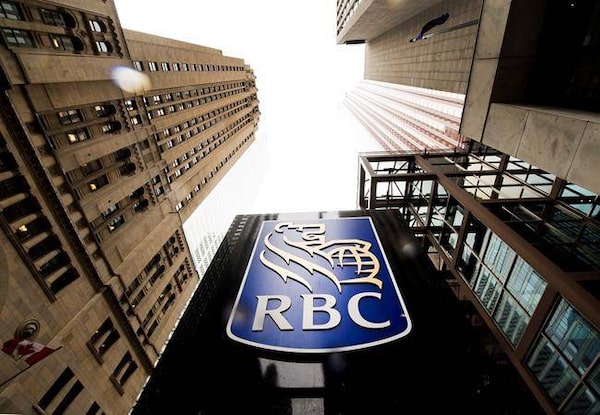
A Royal Bank of Canada sign is shown in the financial district in Toronto on Tuesday, August 22, 2017.Nathan Denette/The Canadian Press
From fine art to jet skis at the cottage, the Royal Bank of Canada learned a lot about its clients' interests when it sold off some of its insurance business last year.
As the largest company in Canada, RBC is used to dominating the market. But when it came to insuring clients' properties and possessions, the financial firm realized it was falling short, without enough scale to compete with the industry's largest players.
To bolster its range of insurance products and keep pace with customer expectations, the bank moved to sell its home and auto insurance business to Aviva Canada Inc. through a $582-million deal in 2016.
The two former competitors also became partners in the deal, striking a 15-year arrangement allowing RBC to continue selling products under its existing brand name, adding the bank's relationships to the potential client base for Aviva. That led to lessons learned for both companies amid an insurance market made volatile in recent years by climate change and shifts in technology.
A year into the deal, RBC's insurance head Neil Skelding said he's observed just how many client demands had gone unmet before the tie-up – especially within the segment of wealthier customers who are of increasing value and importance to the bank.
"I would certainly point out in the high-net-worth space we would have, perhaps, a life policy with the client, and they would talk to us about their home and auto and they would have a number of cars, maybe a cottage … an art collection or something like that, and we couldn't do that," Mr. Skelding said of the company's limited underwriting capabilities. The deal "allowed us to service parts of the market that we had access to, but we couldn't actually do."
Before RBC wed Aviva, the bank's insurance arm had less than a two-per-cent market share in the property and casualty insurance market, when measured by premiums. Aviva had more than eight per cent, which amounted to a significant difference in the fragmented market. Aviva also solidified its position as the second-largest player in the industry through the deal.
In teaming up the bank-owned insurer, Aviva saw a way to expand its distribution platform in direct-to-consumer sales where RBC had been gaining traction, as well as add to its digital offerings. Aviva's traditional strength has been in the broker channel.
"It's about, 'How do we open up the jaws of the organization to allow Canadians to come to us any way they choose to, and in this case through an RBC-branded solution?'" said Greg Somerville, CEO of Aviva Canada.
Mr. Skelding has observed that Aviva's size offers clear advantages.
"As an insurer, when you are dealing with a body shop and you have five per cent of their business, you're not necessarily going to get the exact same result as when you have 30, 40, or 50 per cent," he said, adding that Aviva, a subsidiary of British insurance giant Aviva PLC, also had better systems for processing claims that have sped up operations and payments to customers.
Aviva also had the bandwidth to develop new types of insurance for the Canadian market that RBC wasn't close to offering. One example is insurance for ride-hailing services and Uber drivers. But perhaps most significant was extended home insurance coverage against water damage such as overland flooding.
Since RBC launched its updated water coverage in late February, more than 60 per cent of its home insurance customers have opted to add overland water protection when buying a policy. In fact, Mr. Skelding said he put the coverage on his own policy after it became available through the partnership.
Coverage against water damage gained national attention after the catastrophic flooding in Southern Alberta in 2013 that broke records for resulting in $1.7-billion in insured damages. As the industry grappled with the recovery effort, it also had to face homeowners who thought they had protection against water damage, but in some cases were left without relief because of the way water entered their home.
"It was the '13 floods in Calgary and Toronto that made us think that it wasn't appropriate for somebody to have to determine whether [water] came through the front door, or up through the sewer," Mr. Somerville said.
He said the company is now assessing the potential to introduce devices that monitor for leaky pipes and either shut off water or at least alert the homeowner. In the future, customers may be able to install these systems in their homes for a discount on their premiums.